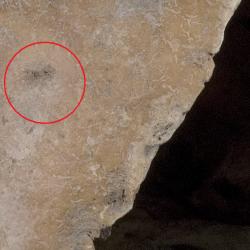Surgical intervention has been frequently performed to treat cranial wounds, headaches, but also could be used to treat infections or tumours inside the cranium.
In the case of the child from Baracs, the cause of this type of surgery is not evident, but some features of the cut suggest that the aim of the trepanation was possibly to treat a blade wound. At the same time a small depression fracture due to a blow to the skull can be seen on the cranial surface near to the trepanation, which could be also a reason for a treatment of an intracranial injury.
The cases of this period are geographically dispersed, mostly these known from the southern and eastern part of the country. The trepanned child from Baracs is a unique case in the Transdanubian region and it also indicates that besides that trepanation made on children, - of which number has been arisen to five with this case – is extremely rare but also not a local feature.
This grave is also instructive since it shows that even if it did not contain any archaeological finds, but the bare bones still could preserve a unique evidence for us about ancient health care and treatment in a past society.
Orsolya László
The results of anthropological analysis can be accessed in the Archaeology Database under Archaeometry: http://archeodatabase.hnm.hu/en/node/711

